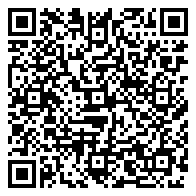Introduction
This comprehensive course provides an in-depth analysis of Money Laundering schemes, Anti-Money Laundering (AML) legislation, and counter-measure techniques for organizations. Participants will gain a thorough understanding of the complexities involved in preventing and protecting their organizations from money laundering activities. The course covers different types of money laundering schemes, methods for proving the origin of income, the required records, how to analyze them, and how to identify suspicious leads.
This course is designed to equip professionals with the skills and knowledge needed to detect and prevent money laundering in their institutions while ensuring compliance with AML regulations.
Course Objectives
By the end of the course, participants will be able to:
- Detect and prevent money laundering activities effectively.
- Define money laundering and understand its cycle.
- Identify different ways in which money laundering can be carried out.
- Analyze financial records and identify possible suspicious activities or leads.
- Apply various methods to prove income or funds from unknown sources.
Course Outlines
Day 1: Advanced Approaches to Anti-Money Laundering
- Risk-based approach to Anti-Money Laundering (AML): Understanding how to apply AML compliance strategies based on risk.
- Money laundering methods through financial, production, and service institutions.
- Customer and entity risks: Identifying high-risk clients and institutions.
- Regional and geographical risks: Understanding how geographical regions influence money laundering activities.
- Logistical, service, and product risks: Evaluating risks associated with different services and products.
- Technical and organizational risks: Implementing robust AML compliance frameworks.
- Anti-Money Laundering risk management strategies: Managing and mitigating risks effectively.
- The role of compliance management in Anti-Money Laundering (AML).
- Continuous improvement in AML processes.
Day 2: Money Laundering Schemes
- Nominee scheme: Understanding how money laundering is carried out using proxies.
- Business front scheme: How businesses are used to launder money.
- Banking scheme: Exploring how banks are involved in money laundering activities.
- Banking-business combination: How money laundering is facilitated by merging banking and business activities.
- Smurfing and structured transactions: Techniques used to break down large sums of money into smaller, less suspicious amounts.
- Shell companies: Using fake companies for money laundering purposes.
- Loan-back schemes: How loans are structured to facilitate money laundering.
- Invoice scams and buy-backs: Exploring fraudulent schemes to launder money.
- Real-life examples of money laundering schemes.
Day 3: Identifying Indicators of Illegal Activities in Bank Records
- How indicators are developed for detecting money laundering.
- How these indicators can be used to spot suspicious activities.
- Examples of indicators: What to look for in bank records and financial transactions.
- Identifying abnormal activity in accounts that may signal money laundering.
- Tips and pitfalls: Best practices for AML compliance in financial records.
Day 4: Methods of Proving Income
- Analyzing financial records to uncover potential money laundering activities.
- Using books and records to track and identify suspicious financial activities.
- How to analyze the balance sheet for money laundering clues.
- Income statement analysis: Identifying inconsistencies and red flags.
- Indirect methods: Using net worth analysis and bank deposits to trace the origin of funds.
- Direct methods: Legal methods of proving income or the origin of funds.
- The Capone Organization: A historical example of money laundering methods.
Day 5: Legislation and Legal Procedures
- An overview of international and regional AML laws.
- The role of the Anti-Money Laundering Authority within organizations.
- The role of financial management and auditors’ reports in AML compliance.
- Methods for detecting tax evasion and other non-compliance activities.
- Investigation procedures: How to conduct a thorough investigation for suspected money laundering.
- Reviewing documents and files of suspicious operations.
- Subpoena, inspection, and issuance of AML reports.
- Wrapping up the program with a focus on practical applications of AML rules and regulations.
Why Attend this Course: Wins & Losses!
Attending this Anti-Money Laundering (AML) course offers numerous benefits to professionals in the financial and compliance sectors. Key takeaways include:
- Detecting and preventing money laundering in both financial and business operations.
- Applying AML strategies effectively to safeguard your organization from illegal activities.
- Understanding AML rules and regulations to ensure compliance with global standards.
- Gaining a comprehensive knowledge of money laundering schemes and how to spot them in real-time.
- Learning the techniques to analyze financial records and detect suspicious transactions.
- Mastering the AML compliance process, from identifying suspicious activity to implementing the appropriate legal procedures.
This course provides a thorough foundation in AML training, making it essential for professionals working in compliance, auditing, banking, and finance.
Conclusion
This Anti-Money Laundering (AML) training course equips participants with the skills and knowledge needed to detect, prevent, and investigate money laundering activities in a variety of sectors. Whether you are a compliance officer, financial auditor, or manager, this course provides valuable insights into how money laundering works, how to identify it, and the legal frameworks needed to protect your organization.
Sign up now and enhance your expertise in Anti-Money Laundering (AML) to ensure that your organization stays compliant with international standards and is protected against financial crimes.


